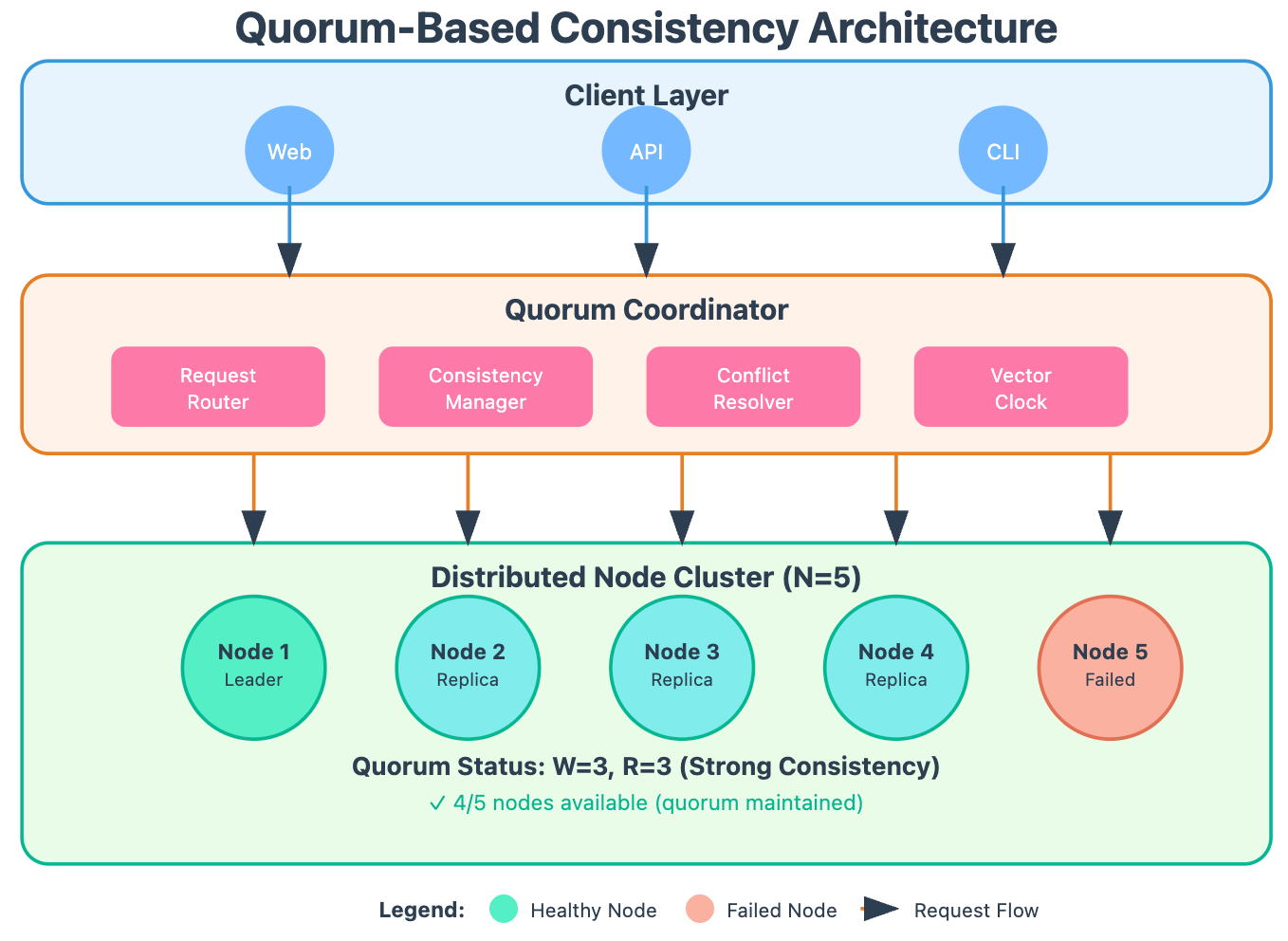Week 4: Distributed Log Storage | Day 28 of 254
Building production-ready consistency control from scratch
Yesterday, you built a query system that could retrieve logs from across your distributed cluster. Today, we're tackling one of the most fundamental challenges in distributed systems: how do you ensure data consistency when multiple nodes might have different versions of the same information?
The Voting Booth Analogy
Imagine you're running a school election across multiple classrooms. Each classroom has a ballot box, but what happens when you need to announce results? Do you trust just one classroom's count? What if that classroom's counter made an error or their ballot box got damaged?
This is exactly the challenge distributed systems face. When your log data is replicated across multiple nodes, how do you know which version is "correct" when they disagree?
What Are Quorums?
A quorum system is like requiring a majority vote before making any decision. Instead of trusting a single node (which could fail or have stale data), you require agreement from multiple nodes before considering an operation successful.
Here's the magic formula:
Write Quorum (W): Minimum nodes that must acknowledge a write
Read Quorum (R): Minimum nodes that must respond to a read
Total Replicas (N): Total number of nodes storing the data
💡 The key insight: R + W > N guarantees strong consistency. This ensures that any read will see at least one node with the latest write.
Figure 1: Quorum-based consistency architecture showing coordinator, nodes, and failure handling



